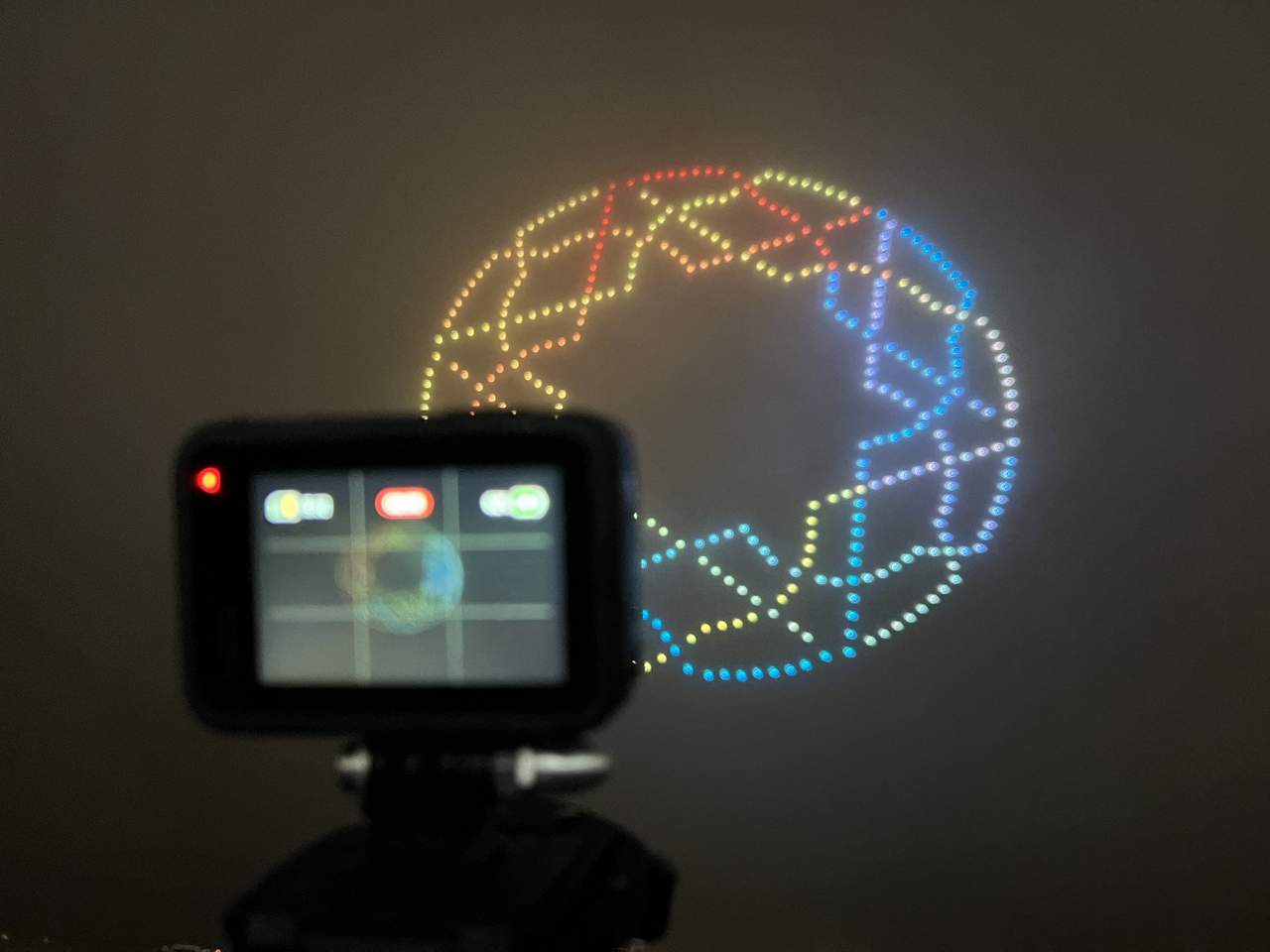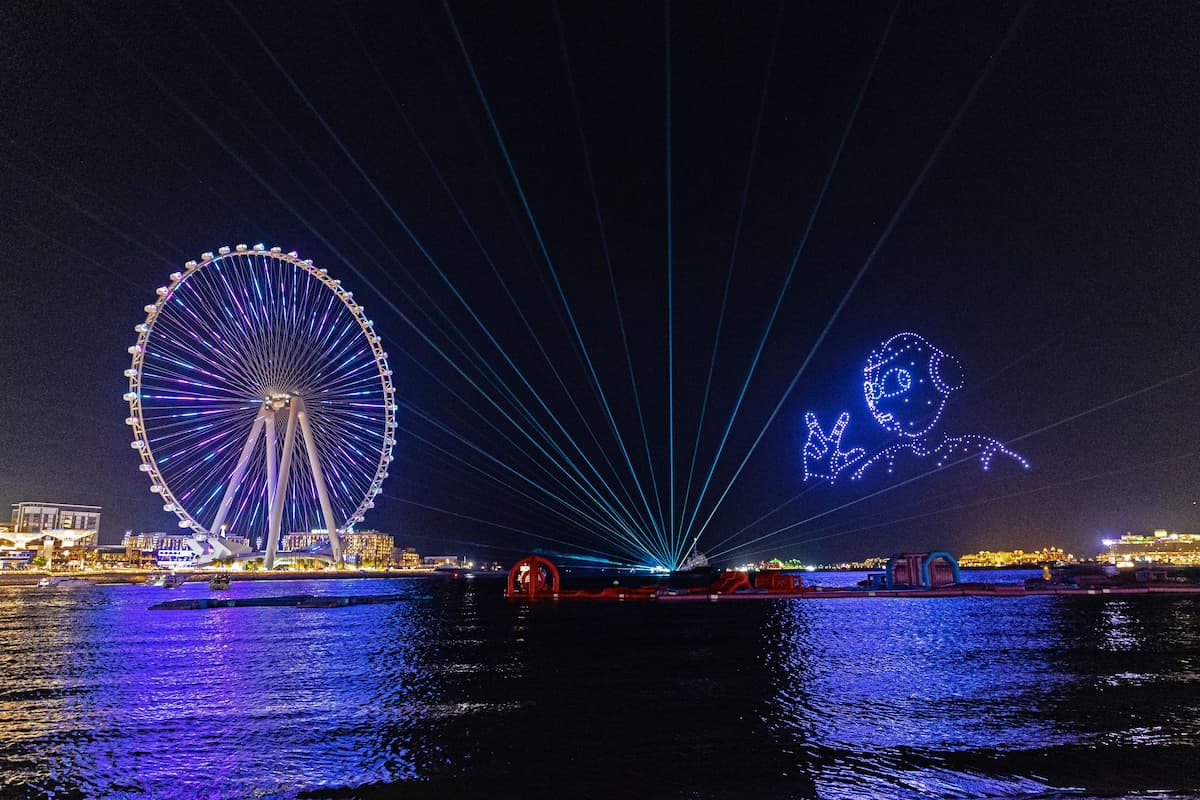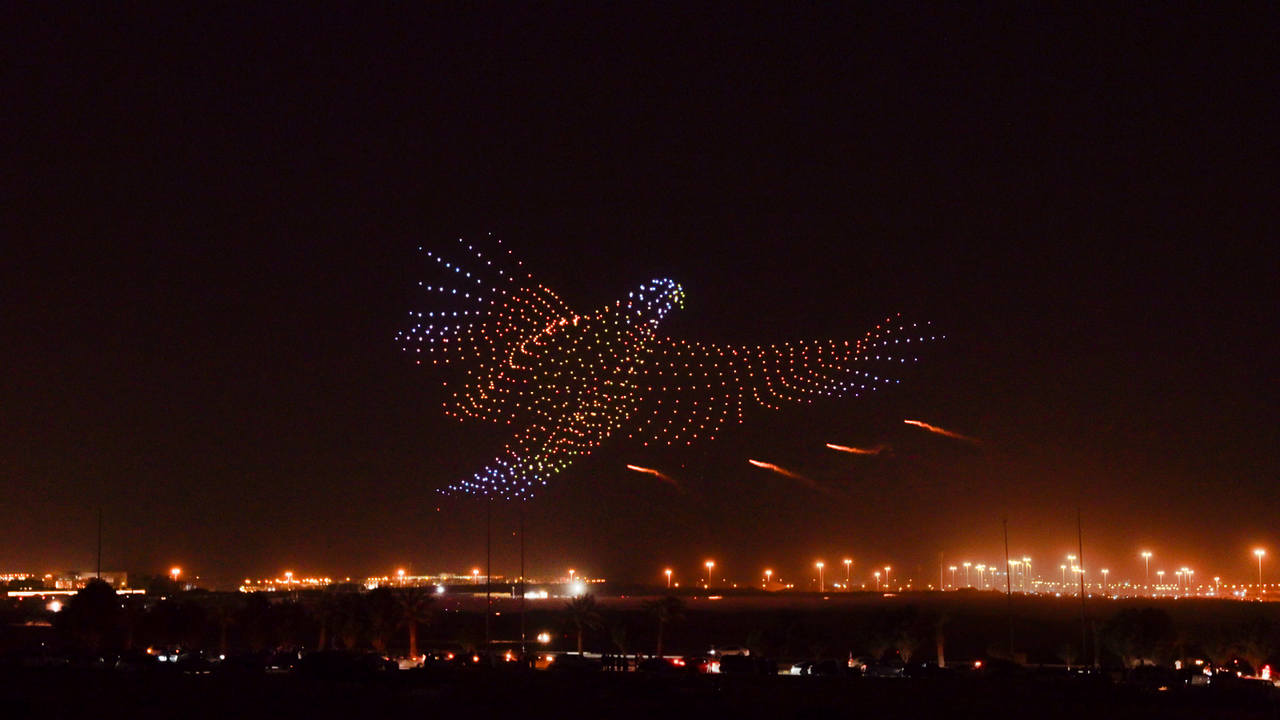Drone show accidents, while relatively rare, highlight the inherent risks involved in large-scale drone operations. These spectacular displays, often mesmerizing audiences with synchronized aerial choreography, rely on complex technology and precise human coordination. A single malfunction or error, however, can lead to a cascade of problems, resulting in damage, injury, or even complete show failure. This exploration delves into the various factors contributing to these accidents, examining both technological limitations and human error, to better understand how to improve safety and prevent future incidents.
We’ll cover the different types of accidents, from mid-air collisions to complete system failures, and analyze the root causes, including software glitches, GPS interference, pilot mistakes, and inadequate safety protocols. We’ll also investigate the crucial role of regulations, training, and technological advancements in mitigating these risks. By understanding the challenges and exploring potential solutions, we can work towards making drone shows safer and more reliable for both operators and spectators.
Drone show accidents, unfortunately, aren’t unheard of. Sometimes, technical glitches or unexpected weather can cause problems during a spectacular drone display. Understanding the technology is key; that’s why learning more about drone technology and safety protocols is crucial for preventing these mishaps. Proper planning and maintenance are vital for ensuring a safe and successful drone show, minimizing the risk of accidents.
Drone Show Accidents: A Comprehensive Overview
Drone shows, while spectacular, carry inherent risks. Understanding the various factors contributing to accidents is crucial for enhancing safety and preventing future incidents. This article explores the common causes, safety protocols, technological limitations, and human errors associated with drone show accidents, offering insights into mitigation strategies and accident investigation procedures.
Types of Drone Show Accidents
Drone show accidents can manifest in several ways, stemming from various causes. Malfunctions often originate from issues with the drone’s hardware, software, or communication systems. Environmental factors, such as strong winds or electromagnetic interference, can also contribute to accidents. Collisions, both between drones and with other objects, are a significant concern. Loss of control, resulting in crashes or uncontrolled flight, is another prevalent accident type.
Fires, caused by battery malfunctions or electrical shorts, pose a serious safety risk.The type of accident often correlates with the drone’s characteristics. Larger, heavier drones may experience more severe consequences in a collision, while smaller drones might be more susceptible to wind interference. For example, a swarm of small consumer drones might experience a loss of GPS signal leading to multiple collisions, whereas a single, larger professional drone could suffer a catastrophic mechanical failure resulting in a fire.
Drone show accidents, sadly, happen. Proper planning and execution are key to avoiding them, and that’s where software like DroneDeploy comes in. Check out this guide on How to Use DroneDeploy A Complete Guide to learn how to plan and execute safer, more impressive drone shows. Mastering this software can significantly reduce the risk of mishaps during your next spectacular drone display.
| Accident Type | Cause | Result | Prevention Measures |
|---|---|---|---|
| Collision | GPS signal loss, software glitch, pilot error | Drone damage, potential injury | Redundant GPS systems, robust software, rigorous pilot training |
| Malfunction | Battery failure, motor malfunction, communication disruption | Loss of control, crash, fire | Regular maintenance, high-quality components, backup systems |
| Fire | Overheating batteries, short circuit | Drone destruction, potential property damage | Fire-resistant materials, thermal monitoring systems |
| Loss of Control | Strong winds, GPS interference, software error | Uncontrolled flight, crash | Wind speed monitoring, robust communication systems, fail-safe mechanisms |
Safety Regulations and Protocols
Stringent regulations and guidelines govern drone show operations in many countries. These often encompass aspects like airspace authorization, pilot licensing, and operational safety procedures. Pilot training and certification are paramount, ensuring pilots possess the necessary skills and knowledge to handle various scenarios. Pre-flight checks, including thorough inspections of the drones and their systems, are crucial. Safety procedures cover aspects like emergency protocols, communication systems, and contingency plans.
Drone show accidents, sadly, can happen. Proper planning and communication are key to avoiding them, and sometimes, even that isn’t enough. Think about the logistical challenges – coordinating multiple drones, for example, which reminds me of another complex network: Check out this guide for navigating the sometimes tricky waters of BC Ferries Wifi, BC Ferries Wifi A Comprehensive Guide , to see how connectivity can be managed effectively.
Understanding complex systems, whether drones or wifi networks, is crucial for preventing mishaps.
While the specifics vary, many regions enforce similar principles emphasizing risk mitigation and public safety. For instance, some countries mandate a specific flight distance from spectators, while others require a safety officer to oversee operations.
Technological Factors Contributing to Accidents
Technological limitations inherent in drones can increase accident risks. GPS signal interference or loss can severely impact a drone’s stability and control, leading to crashes or collisions. Software glitches and outdated firmware can cause unexpected malfunctions, potentially leading to accidents. The reliance on complex systems means that a single point of failure can have cascading effects.  The flowchart would illustrate a typical sequence: Initiating flight sequence -> GPS signal loss -> Drone instability -> Loss of control -> Collision/Crash.
The flowchart would illustrate a typical sequence: Initiating flight sequence -> GPS signal loss -> Drone instability -> Loss of control -> Collision/Crash.
Human Error in Drone Shows

Human error is a significant contributor to drone show accidents. Pilot mistakes, such as improper flight planning or inadequate response to unexpected events, can have devastating consequences. Fatigue, stress, and inadequate training can significantly impair pilot performance. Poor communication among team members can also lead to accidents.Best practices include thorough pre-flight planning, regular training, and clear communication protocols.
Utilizing checklists and adhering to safety procedures minimizes the risk of human error.
| Type of Human Error | Frequency | Severity |
|---|---|---|
| Improper Flight Planning | High | Medium to High |
| Inadequate Pilot Response | Medium | High |
| Poor Communication | Medium | Medium |
| Fatigue/Stress | Low | High |
Post-Accident Response and Investigation

Accident investigation involves a systematic approach to determine the root cause of the incident. Regulatory bodies play a crucial role, often leading investigations and enforcing regulations. Data collection includes examining drone logs, witness accounts, and physical evidence from the crash site. Securing the scene involves establishing a perimeter, documenting the location of drones and debris, and preserving evidence. A step-by-step procedure would involve: 1.
Secure the area; 2. Document the scene; 3. Collect data; 4. Preserve evidence; 5. Initiate investigation.
Mitigation Strategies and Future Prevention, Drone show accident

Advanced safety features, such as redundant systems and fail-safes, can significantly enhance drone safety. Redundant GPS systems and backup power sources can mitigate the impact of single-point failures. Innovative technologies, like advanced obstacle avoidance systems and autonomous recovery mechanisms, offer further improvements.Hypothetical Scenario: A drone show experiences a sudden power outage. Redundant power systems immediately kick in, allowing the drones to maintain control and land safely.
The advanced obstacle avoidance system prevents collisions during the emergency landing.
Drone show accidents, sadly, highlight the risks involved in complex aerial displays. It’s a sobering reminder of how easily things can go wrong, even with advanced technology. Hearing about the passing of Rickey Henderson, Rickey Henderson Baseball Legend Dies at 65 , makes you think about unexpected loss. The contrast between planned technological failures and the unpredictable nature of life is stark; both remind us to appreciate the present moment, especially given the potential for things to go wrong in both planned events and life itself.
Illustrative Examples of Accidents
Here are three hypothetical examples illustrating different types of drone show accidents:
- Accident 1: GPS Interference: A swarm of drones experienced GPS interference from a nearby construction site using similar frequencies. This resulted in multiple collisions, causing damage to several drones and a minor delay in the show.
- Accident 2: Battery Malfunction: A large drone suffered a battery malfunction during a nighttime show. The battery overheated, causing a fire that damaged the drone and required a temporary suspension of the performance.
- Accident 3: Pilot Error: A pilot, due to fatigue and stress, misjudged the drone’s position, leading to a collision with a building. The drone was damaged, and the show experienced a significant delay.
Final Conclusion

Ultimately, preventing drone show accidents requires a multi-faceted approach. Stringent safety regulations, rigorous pilot training, robust technological safeguards, and thorough pre-flight checks are all essential components. While technology continues to evolve, offering increasingly sophisticated solutions, the human element remains a critical factor. By fostering a culture of safety awareness and prioritizing responsible operation, we can minimize risks and ensure that these breathtaking displays continue to captivate audiences without compromising safety.
The lessons learned from past accidents should serve as a constant reminder of the need for vigilance and continuous improvement in this rapidly developing field.
Detailed FAQs
What is the most common cause of drone show accidents?
While various factors contribute, human error, including pilot mistakes and inadequate planning, frequently plays a significant role.
How are drone show accidents investigated?
Investigations typically involve analyzing drone flight logs, witness testimonies, and examining the damaged drones to determine the cause.
What insurance is needed for drone show operations?
Comprehensive liability insurance is crucial to cover potential damages or injuries resulting from accidents.
Are there international standards for drone show safety?
While not universally standardized, many countries have regulations regarding drone operation, particularly for commercial uses like drone shows. These often cover pilot certification, airspace restrictions, and safety protocols.